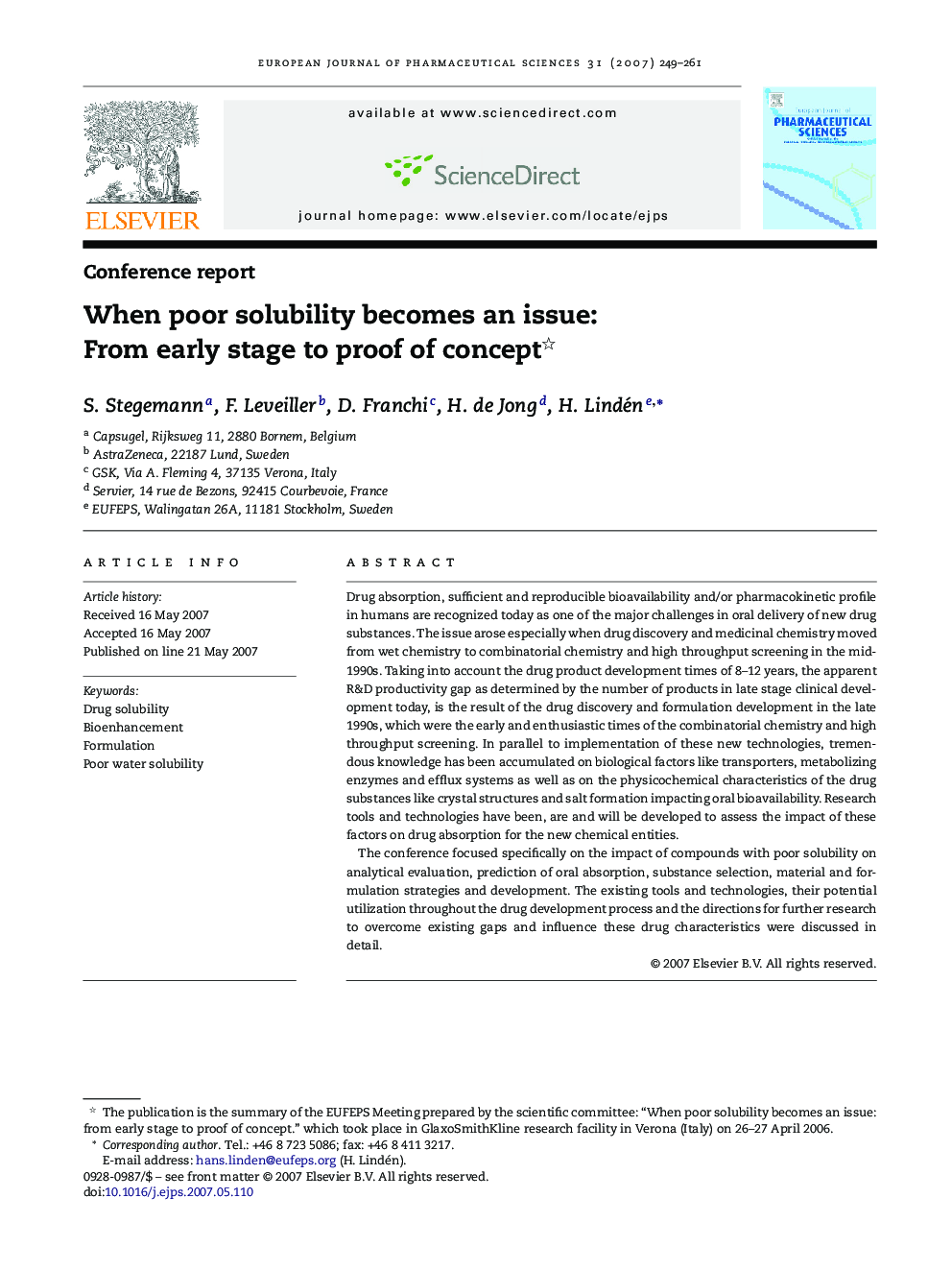| Article ID | Journal | Published Year | Pages | File Type |
|---|---|---|---|---|
| 2482462 | European Journal of Pharmaceutical Sciences | 2007 | 13 Pages |
Drug absorption, sufficient and reproducible bioavailability and/or pharmacokinetic profile in humans are recognized today as one of the major challenges in oral delivery of new drug substances. The issue arose especially when drug discovery and medicinal chemistry moved from wet chemistry to combinatorial chemistry and high throughput screening in the mid-1990s. Taking into account the drug product development times of 8–12 years, the apparent R&D productivity gap as determined by the number of products in late stage clinical development today, is the result of the drug discovery and formulation development in the late 1990s, which were the early and enthusiastic times of the combinatorial chemistry and high throughput screening. In parallel to implementation of these new technologies, tremendous knowledge has been accumulated on biological factors like transporters, metabolizing enzymes and efflux systems as well as on the physicochemical characteristics of the drug substances like crystal structures and salt formation impacting oral bioavailability. Research tools and technologies have been, are and will be developed to assess the impact of these factors on drug absorption for the new chemical entities.The conference focused specifically on the impact of compounds with poor solubility on analytical evaluation, prediction of oral absorption, substance selection, material and formulation strategies and development. The existing tools and technologies, their potential utilization throughout the drug development process and the directions for further research to overcome existing gaps and influence these drug characteristics were discussed in detail.
